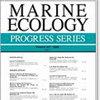Gulf Stream intrusions associated with extreme seasonal fluctuations among larval fishes
IF 2.2
3区 环境科学与生态学
Q2 ECOLOGY
引用次数: 0
Abstract
ABSTRACT: Change in phenology is one of the hallmarks of global climate change. In marine fishes, warming is expected to cause the advancement of a spring peak in larval occurrence or the delay of a fall peak. However, empirical evidence has not consistently upheld this broad prediction, implying that more nuanced hypotheses are needed. Our study investigates oceanic impacts on fish phenology by examining patterns in larval occurrence on the Northeast US continental shelf, one of the most rapidly warming regions of the global ocean. We use data from NOAA’s Ecosystem Monitoring Program, which samples larval fish taxa across the shelf on a bimonthly basis. The sampling program began in 1999, thus documenting changes during a period of rapid warming. We calculated the central tendency of seasonal larval occurrence for 38 taxa and tested for temporal relationships with oceanic drivers thought to influence larval seasonality in other ecosystems. We did not find evidence for warming-related changes in larval phenology over the last 2 decades. Rather, we found high interannual variability in larval timing among many populations, especially those along the shelf break. Among examined factors, salinity maximum intrusions associated with Gulf Stream warm core rings showed the strongest explanatory power for variation in larval fish phenology. Additionally, the occurrence timing of highly variable larval populations overlapped with that of salinity maximum intrusions. Our results suggest that uniform phenological responses to warming are unlikely in this ecosystem, and that hydrodynamic processes connecting widely dispersed regions can strongly influence the phenology of fish.湾流入侵与幼鱼的极端季节性波动有关
摘要:物候变化是全球气候变化的标志之一。在海洋鱼类中,气候变暖预计会导致幼虫发生的春季高峰提前或秋季高峰推迟。然而,经验证据并没有一直支持这一广泛的预测,这意味着需要更细致的假设。美国东北部大陆架是全球海洋变暖最迅速的地区之一,我们的研究通过考察该地区幼体出现的模式,研究了海洋对鱼类物候学的影响。我们使用的数据来自美国国家海洋和大气管理局(NOAA)的生态系统监测计划,该计划每两个月对大陆架上的幼鱼类群进行采样。该采样计划始于 1999 年,因此记录了快速变暖时期的变化。我们计算了 38 个分类群的幼虫季节性出现的中心趋势,并检验了与其他生态系统中被认为会影响幼虫季节性的海洋驱动因素之间的时间关系。在过去 20 年中,我们没有发现幼虫物候变化与气候变暖有关的证据。相反,我们发现在许多种群中,尤其是沿大陆架断裂带的种群,幼虫时间的年际变化很大。在所考察的因素中,与湾流暖核环相关的盐度最大入侵对幼鱼物候变化的解释力最强。此外,高变异幼鱼种群的出现时间与盐度最大入侵时间重叠。我们的研究结果表明,该生态系统不太可能对气候变暖做出一致的物候反应,而连接广泛分散区域的水动力过程会对鱼类的物候产生强烈影响。
本文章由计算机程序翻译,如有差异,请以英文原文为准。
求助全文
约1分钟内获得全文
求助全文
来源期刊

Marine Ecology Progress Series
环境科学-海洋学
CiteScore
5.30
自引率
8.00%
发文量
238
审稿时长
3 months
期刊介绍:
The leading journal in its field, MEPS covers all aspects of marine ecology, fundamental and applied. Topics covered include microbiology, botany, zoology, ecosystem research, biological oceanography, ecological aspects of fisheries and aquaculture, pollution, environmental protection, conservation, and resource management.
 求助内容:
求助内容: 应助结果提醒方式:
应助结果提醒方式:


